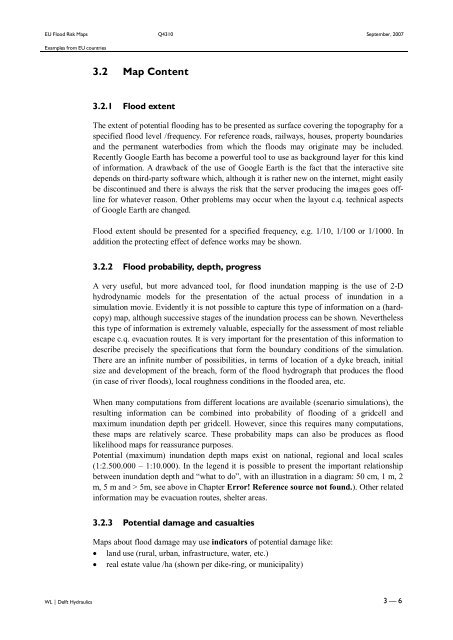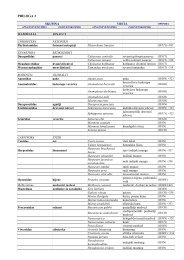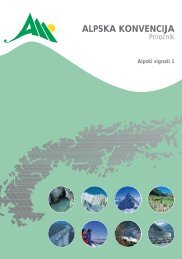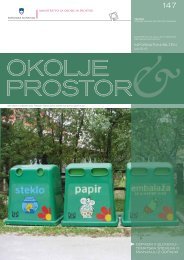Atlas of Flood Maps
Atlas of Flood Maps
Atlas of Flood Maps
Create successful ePaper yourself
Turn your PDF publications into a flip-book with our unique Google optimized e-Paper software.
EU <strong>Flood</strong> Risk <strong>Maps</strong> Q4310 September, 2007<br />
Examples from EU countries<br />
WL | Delft Hydraulics<br />
3.2 Map Content<br />
3.2.1 <strong>Flood</strong> extent<br />
The extent <strong>of</strong> potential flooding has to be presented as surface covering the topography for a<br />
specified flood level /frequency. For reference roads, railways, houses, property boundaries<br />
and the permanent waterbodies from which the floods may originate may be included.<br />
Recently Google Earth has become a powerful tool to use as background layer for this kind<br />
<strong>of</strong> information. A drawback <strong>of</strong> the use <strong>of</strong> Google Earth is the fact that the interactive site<br />
depends on third-party s<strong>of</strong>tware which, although it is rather new on the internet, might easily<br />
be discontinued and there is always the risk that the server producing the images goes <strong>of</strong>fline<br />
for whatever reason. Other problems may occur when the layout c.q. technical aspects<br />
<strong>of</strong> Google Earth are changed.<br />
<strong>Flood</strong> extent should be presented for a specified frequency, e.g. 1/10, 1/100 or 1/1000. In<br />
addition the protecting effect <strong>of</strong> defence works may be shown.<br />
3.2.2 <strong>Flood</strong> probability, depth, progress<br />
A very useful, but more advanced tool, for flood inundation mapping is the use <strong>of</strong> 2-D<br />
hydrodynamic models for the presentation <strong>of</strong> the actual process <strong>of</strong> inundation in a<br />
simulation movie. Evidently it is not possible to capture this type <strong>of</strong> information on a (hardcopy)<br />
map, although successive stages <strong>of</strong> the inundation process can be shown. Nevertheless<br />
this type <strong>of</strong> information is extremely valuable, especially for the assessment <strong>of</strong> most reliable<br />
escape c.q. evacuation routes. It is very important for the presentation <strong>of</strong> this information to<br />
describe precisely the specifications that form the boundary conditions <strong>of</strong> the simulation.<br />
There are an infinite number <strong>of</strong> possibilities, in terms <strong>of</strong> location <strong>of</strong> a dyke breach, initial<br />
size and development <strong>of</strong> the breach, form <strong>of</strong> the flood hydrograph that produces the flood<br />
(in case <strong>of</strong> river floods), local roughness conditions in the flooded area, etc.<br />
When many computations from different locations are available (scenario simulations), the<br />
resulting information can be combined into probability <strong>of</strong> flooding <strong>of</strong> a gridcell and<br />
maximum inundation depth per gridcell. However, since this requires many computations,<br />
these maps are relatively scarce. These probability maps can also be produces as flood<br />
likelihood maps for reassurance purposes.<br />
Potential (maximum) inundation depth maps exist on national, regional and local scales<br />
(1:2.500.000 – 1:10.000). In the legend it is possible to present the important relationship<br />
between inundation depth and “what to do”, with an illustration in a diagram: 50 cm, 1 m, 2<br />
m, 5 m and > 5m, see above in Chapter Error! Reference source not found.). Other related<br />
information may be evacuation routes, shelter areas.<br />
3.2.3 Potential damage and casualties<br />
<strong>Maps</strong> about flood damage may use indicators <strong>of</strong> potential damage like:<br />
� land use (rural, urban, infrastructure, water, etc.)<br />
� real estate value /ha (shown per dike-ring, or municipality)<br />
3—6







